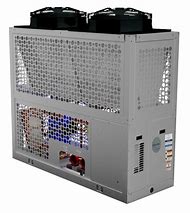Modular-Chiller

Modular Chiller
A Modular-Chiller uses two or more modules to expand your system’s cooling capacity further than a standard chiller would. When the modules work together, they create a larger capacity than one standard chiller would alone.
Modular chiller have emerged recently as a more cost-effective, mass-produced answer to completely customized chillers in HVAC systems. What is a modular chiller? It’s a small packaged chiller that your HVAC provider can combine with other chiller modules to make a single larger machine within your HVAC system. Let’s explore the different types of modular chiller systems and how you can benefit from installing one in your commercial HVAC system.
The different types of modular chillers include modular water-cooled chillers and modular air-cooled chillers.. However, both types have the same central parts, including a compressor, a condenser, an expansion device, and an evaporator. Within those two main types, there are a few subtypes related to their compressor types: centrifugal, screw, and scroll. Our team members at Air Comfort can help you decide which modular chiller type and subtype best fit your facility’s HVAC operations.

Modular Chiller
When you put two of these chiller modules together, one module controls the other. The two modules communicate to each other through a microprocessor controller. For water-cooled chillers, the chilled water travels from both modules’ chilled water supply and from the heat exchanger (after it cools) to the main module’s chilled water supply header and return header.
In general, chillers expand your HVAC system’s cooling capacity. A modular chiller uses two or more modules to expand your system’s cooling capacity further than a standard chiller would. When the modules work together, they create a larger capacity than one standard chiller would alone. For example, they’re smaller in size than standard chillers, so they’re great for retrofitting old heating and air conditioning equipment. You can fit the modules into an existing HVAC system more easily than you can a standard chiller. Additionally, having multiple modules gives your system extra redundancy. That means you’ll face less downtime if one of the modules malfunctions because each module has its own dedicated power, so it can keep producing cooling capacity for your system

